Stories from cedar: New film by RRU prof. carves out a place for belonging
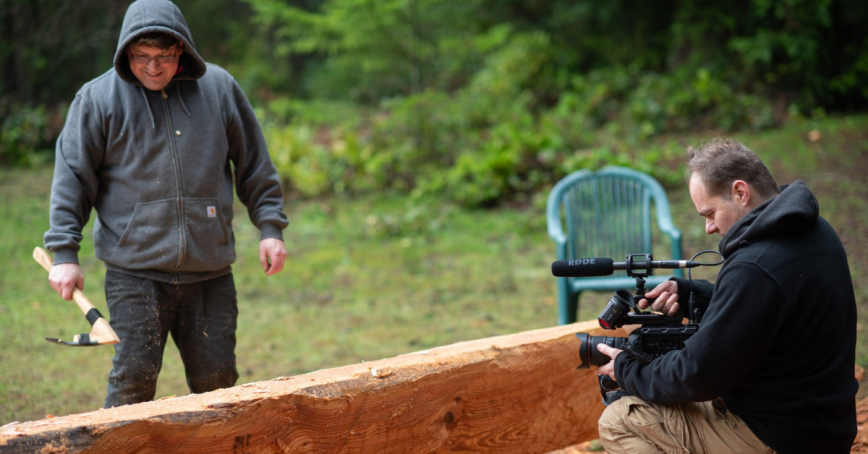
When the x'pey (western red cedar) log arrived on the grounds of Gabriola Elementary School, Beau Wagner sat with it and waited.
“I watched that log for two days,” says Wagner, a Coast Salish canoe carver, artist and woodworker. Before he puts blade to bark, Wagner says it is important to first listen to its stories.
“Trees are relatives,” he says. “They are beings. They have their own spirits.”
It’s just one of the sacred teachings he echoes from his Elders and shares with students on the rural southern Gulf Island in Our Teacher, a new film directed by School of Communication and Culture Prof. Phillip Vannini.
Our Teacher focuses on Wagner as he works with the x’pey, carving what’s said to be the first dugout canoe since contact on Gabriola Island. But at its core, the film is much more; it’s a story about transformation.
“It’s a powerful healing journey that will force us to reflect on the meanings of education, curiosity, and the power of building respectful relationships with all life,” says Vannini, who stayed with Wagner for the nine months he carved.
As Wagner sat with that qwlhey' (log), he had a vision.
“I saw children laughing, paddling the canoe with the sun at their backs,” he says. “In that moment, I knew that’s what that log was longing for – to create those memories, to create that joy, to absorb those children’s laughter.”
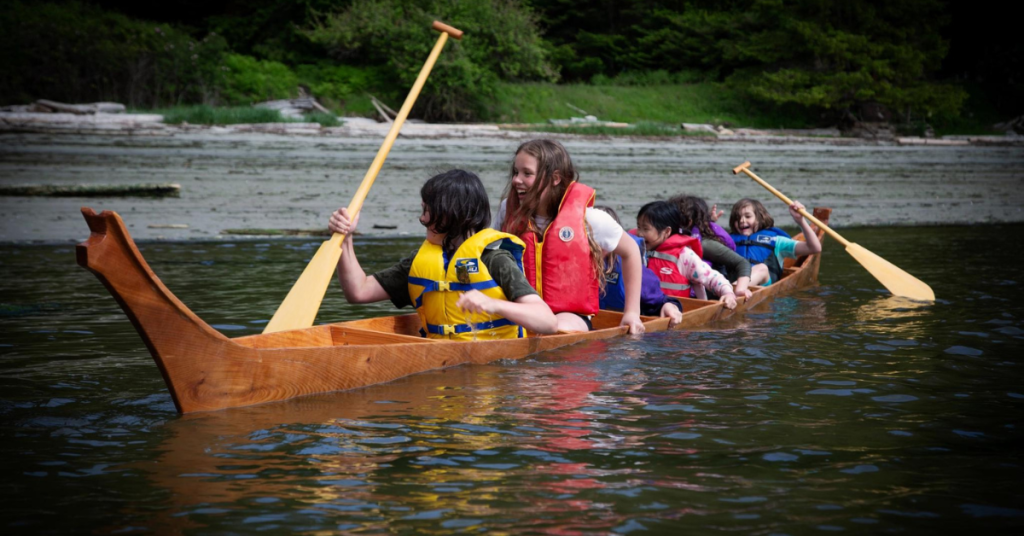
The Healing Canoe Program is a hands-on, Land-based program involving the carving of a snuhwulh (canoe) and the sharing of sacred traditional knowledge in part, through ceremony.
It’s a vision Vannini captures throughout the film in beautiful moments of connection and compassion.
Cedar, Wagner explains to the children in a classroom scene, is very absorbent.
“It absorbs every spoken word,” he says. “So when we’re working with cedar, we have a lot of respect. It’s absorbing all those good feelings that we feel — that joy and that laughter. So I encourage you to feel it, to feel that love and that joy.”
A healing journey, one canoe at a time
Joy and love are feelings that were distinctly missing from Wagner’s younger years – feelings he found working with x’pey, and with his teachers, the late Stz’uminus First Nation master carver ShYa’QuThut (Elmer Sampson) and his brother.
In many ways, the film is also a tribute to the Sampson brothers and to their legacy.
Wagner describes his family upbringing as “dysfunctional” with a history of “internal racism” and abuse. He says that home life sent him on a “self-destructive” path that included substance use and homelessness.
When he was in his 20s, a friend of the family introduced Wagner to Elder Elmer Sampson, who offered him an apprenticeship and so much more.
“He saved my life,” Wagner says.
Wagner remembers being in a lot of pain one day. “Papa,” as Wagner affectionately calls him, came over and embraced him.
“He told me, ‘you belong’, and ‘you are loved’. He was just so kind and gentle and soft spoken.”
Never having known his own father, Wagner says Sampson helped him set a different course for himself.
“He showed me the world around us is all living and interconnected and that everyone in the world needs the world around us as much as we need the world,” he says.
Like x’pey, it’s a message that Wagner has absorbed – and it’s one that he’s on a journey to share back with the next generation – to make the old new again.
Inspired by his teacher, Wagner began the Healing Canoe Program, a hands-on, Land-based program involving the carving of a snuhwulh (canoe) and the sharing of sacred traditional knowledge in part, through ceremony.
Wagner has run the program three times, the second of which takes place in the film.
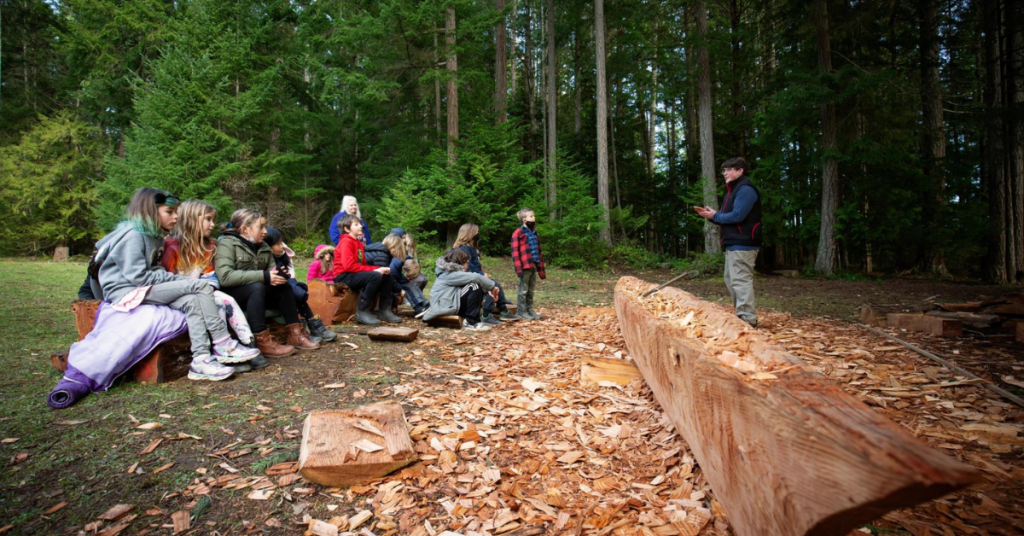
“When one tree’s story is told through its own transformation but also through traditional teachings, we start to see no longer a forest, but individual trees with stories.” - Phillip Vannini
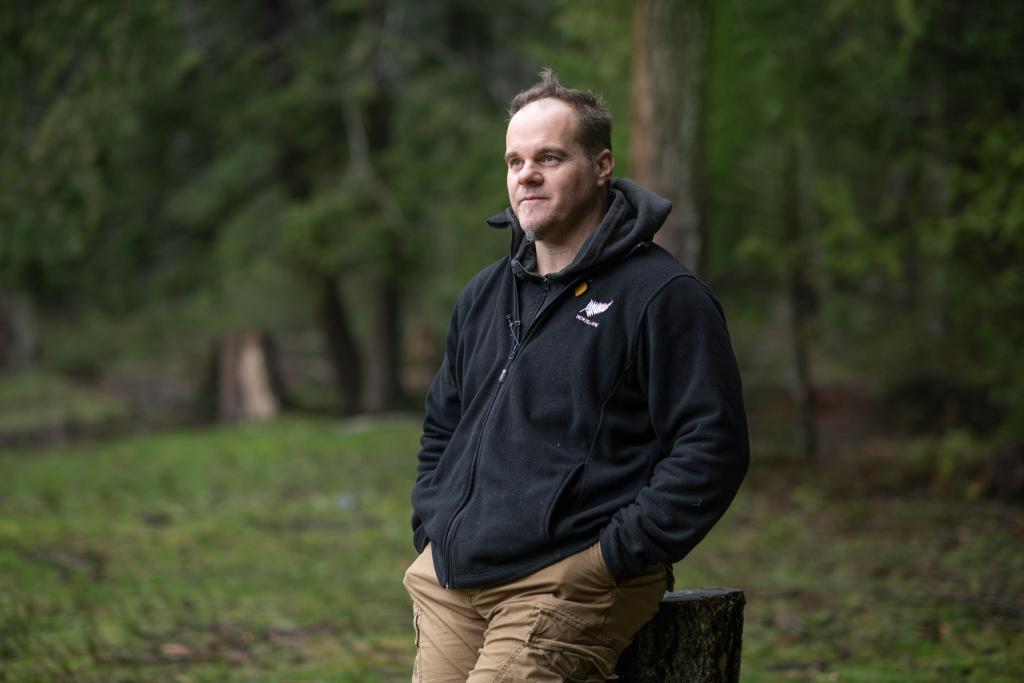
Phillip Vannini, a Gabriola Island-based filmmaker and Royal Roads ethnographic researcher, says Our Teacher holds a powerful message about cultural understanding and the way we relate to nature.
“There was a powerful story there”
It was a story Vannini, a Gabriola Island-based filmmaker and ethnographic researcher, was immediately drawn to – one he initially planned to tell in about four minutes.
Very quickly, Vannini dropped that idea.
“Beau has a very unique way of sharing his knowledge and of relating to children,” Vannini says. “They gravitate towards him and that became evident over time. It wasn’t until I had already spent some time filming that I understood that there was a very powerful story there.”
Vannini noticed the children were becoming very attached to the canoe – stuffing fistfuls of shavings into their pockets and backpacks and visiting Wagner outside of classroom hours.
“We thought, never mind a four-minute video,” Vannini says of discussions with film writer and RRU associate faculty member April Vannini. “This is going to be much longer; to tell the story, it’s going to take time.”
In consultation with Wagner, the two decided to stay true to the story that the qwlhey' (log), and later the snuhwulh (canoe), wanted to tell.
“We wanted to remain faithful to its evolution and its transformation over time and we also wanted to be very mindful of the fact that we wanted to honour his teacher. So the things that we were determined to include in the final cut were the lessons, the teachings that his teacher would have wanted us to share with the world,” Vannini says.
Vannini says the children learned from Wagner and the sacred Coast Salish teachings in a way that many adults wouldn’t.
“The children were able to understand things about animism that adults would quickly dismiss,” he says. Children have much more open minds, especially at elementary school age.”
The film shows how over time, the children engaged more and more with Wagner, gravitating toward him, the snuw'uyulh (sacred teachings) and the snuhwulh (canoe).
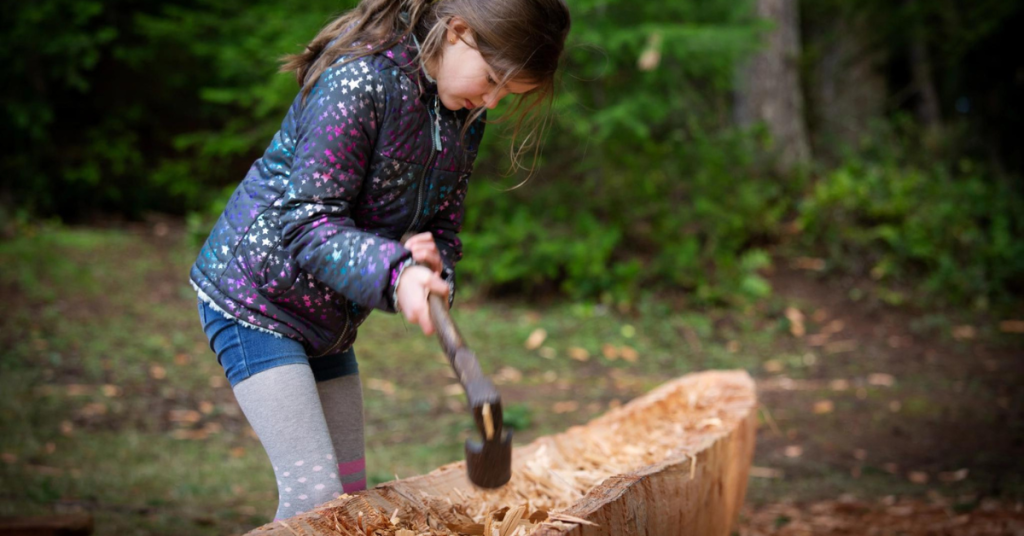
At one point in the film, the kids felt they had watched enough, Vannini says. They wanted to start carving, too. “This was not something that was planned. The canoe had drawn them in, so it was just great to be there to witness it.”
“It was amazing to see how much they belonged to the canoe and how much it belonged to them,” Vannini says.
“When one tree’s story is told through its own transformation but also through traditional teachings, we start to see no longer a forest, but individual trees with stories.”
The film also holds a powerful message about cultural understanding and the way we relate to nature, Vannini says.
“It’s these kids that are going to run the world and I think they’re going to do a better job than we have.”
Read a Q and A with Our Teacher Director, Phillip Vannini.
Our Teacher will be screened at upcoming film festivals including the Oakville Festivals of Film & Art June 21 to 27, Toronto Lift-off Film Festival, June 5 to July 3 and the 19th Annual ReelHeART International Film And Screenplay Festival July 3 to 9.
Interested in learning more about our programs in the School of Communication and Culture? Visit the programs page or request more information.